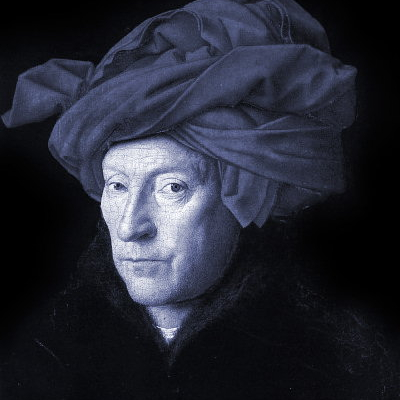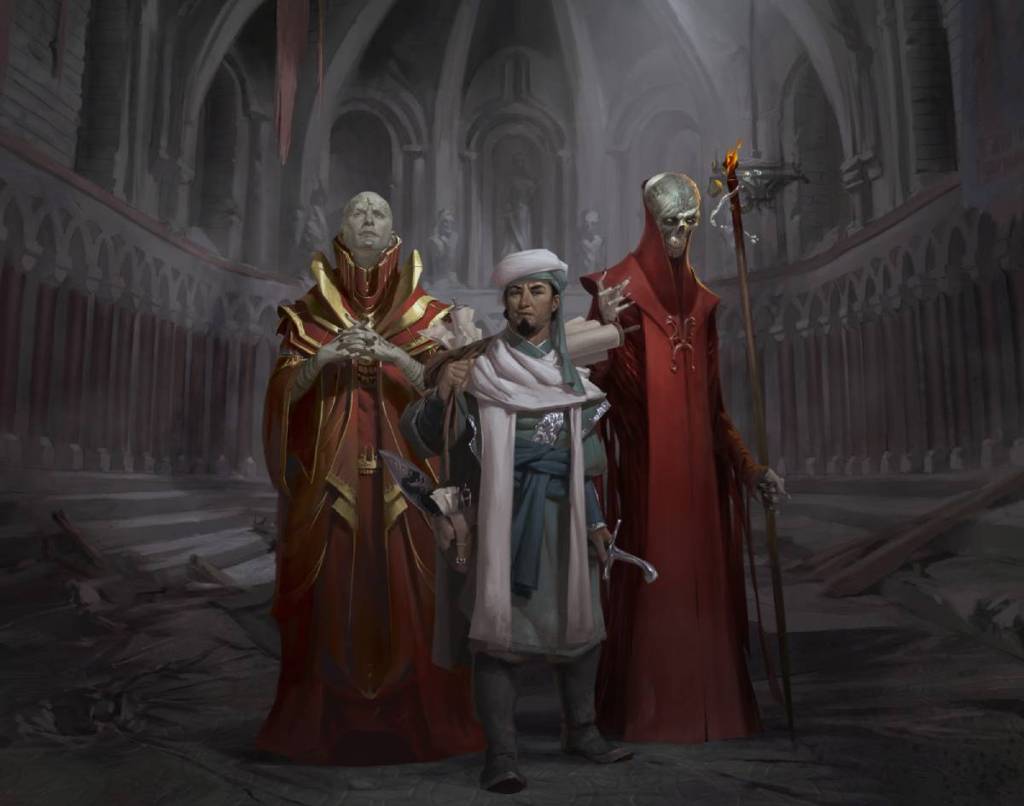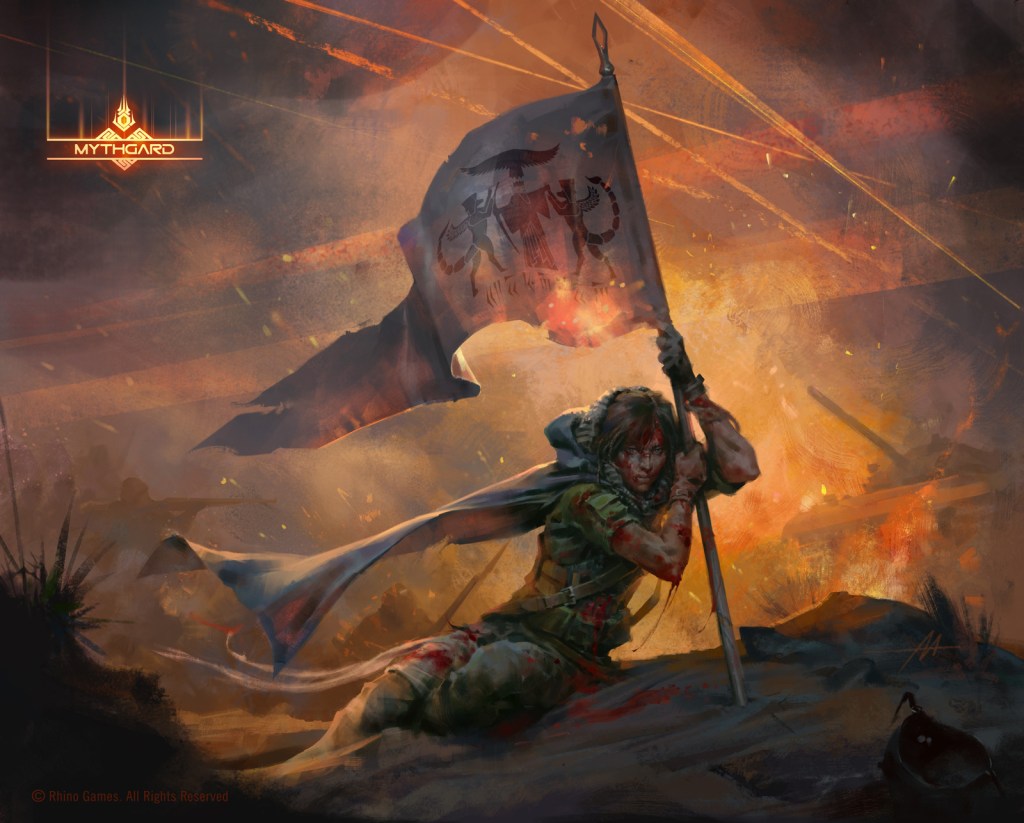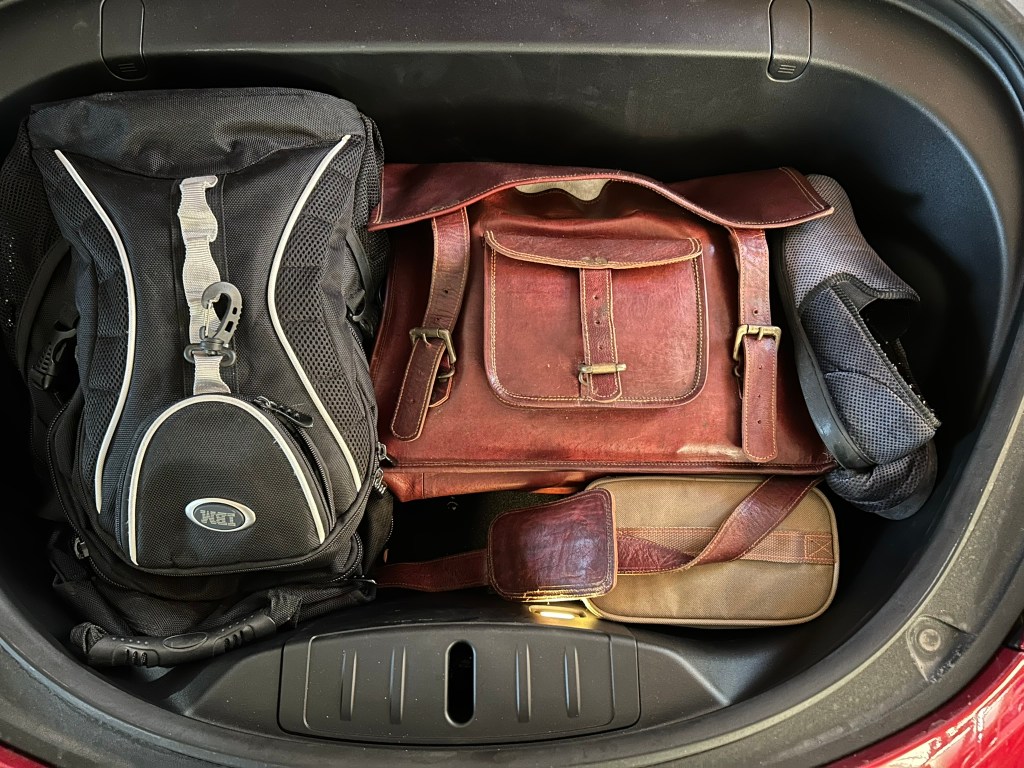In old-school Dungeons & Dragons, ghosts were portrayed as powerful, incorporeal undead that could age you 10 years on sight and 10-40 years with a touch, and they could only be hit with silver and magic weapons. That’s boring.
Allowing ghosts to be hit with weapons means the PCs are going to hit them with weapons and walk away, slapping each other on the back. Spirits should be special monsters that can’t be dealt with using the usual murder-hobo techniques.
Instead, treat them as puzzles to be solved.
What follows is adapted from Barclay’s Survey of the Spirit World (Tobias Barclay and Elizabeth Barclay, 1899), for my money the definitive word on the supernatural, altho my copy of it is sadly incomplete, with the color plates robbed out and the word “lies” scrawled in blood on several pages.
This first part will address spirits in general and ghosts in particular as well as give an overview of corporeal undead.
First: the Supernature of Spirits
Living beings like you and me are made of spirit, soul, and body. The spirit is drawn from the churning and swirling dynamic energy of the ethereal plane and is the source of desires and ambition. The soul is captured from the calm and placid potential energy of the astral plane–the source of peace and contentment. They are bound together with the body by the quickening in the womb.
When the body dies, it returns to the earth, while the spirit and soul return to their respective planes. But sometimes, the spirit remains trapped on the material plane–with or without the body–where it yearns and searches endlessly as an undead creature. (Soul, however, is without power in isolation, so talk of trapping a soul is a mistake for trapping a spirit.)
Sometimes too, spirit stuff crosses over from the ethereal plane by chance (lightning, powerful magic, etc.) and becomes bound to a place or thing. These tend to inhabit places as nature spirits or infect people, causing disease and madness as evil spirits.
The Spirit Anchor

Spirits are bound to a thing or place on the material plane called their spirit anchor. For living beings and for the corporeal undead, this is of course their physical body. For incorporeal spirits, it is an object that had meaning to the creature’s former life, usually a prized possession.
Wayward spirits can be put to rest by destruction of the spirit anchor, banishing the spirit (which may only be done by a powerful cleric), or by satisfying it that its worldly business is finished, which is called solace.
While destroying the spirit anchor may seem easiest, identifying and finding the thing can be quite difficult. It is commonly hidden or lost, or it may be an entire building–altho it can’t be larger than the spirit’s demesne [deh-MAIN] (typically an area the size of its house and grounds in life to which it is limited in its movements). And threatening the spirit anchor is sure to make the spirit most angry.
Altho a spirit anchor always seems special or weird, the destruction of one is no more difficult than for a normal item. Many burials include special items the deceased had an emotional attachment to, which might be a spirit anchor. Whether the survivors realize it or not, this ensures that, if the deceased happens to remain in this world as a ghost, the spirit haunts the tomb and not the home of the living.
Ghosts
A ghost is the disembodied spirit of a person who died in a state of great mental and emotional distress, unprepared for death. There are three types: phantoms, poltergeists, and controlling spirits, altho these are merely preferred methods of manifestation. Some especially powerful ghosts use two or even all three methods.
Phantom
Phantoms tend to be weaker spirits, created by the traumatic death of people whose lives were filled with sorrow, loneliness, longing, or guilt. They manifest visually as pale, translucent images of themselves (phantasm) in a funeral shroud or laid out for viewing or–if the body was never found–in the clothes they wore at the time of their death. Solid objects (including magical weapons) pass thru them harmlessly.

Phantoms typically appear preoccupied, silently reenacting some task that they commonly performed in life, or they may reenact their death, or else one may haphazardly search for something, called a focus, such as:
- Its own lost corpse
- The person or thing that caused its death
- A precious treasure
- Something that might have prevented death (a tool, a key, a weapon)
- Food or water, if the person died for lack of it
- An abstraction (approval, acceptance, clearing your name)
It may ask for help or it may be angered by the interruption. Its thoughts are muddled half-thoughts; its speech (to the degree it is capable), jumbled words and moans.
They pass thru walls, float in space, and vanish at will. They react only when approached and confronted, if even then, but their reaction is usually to change their countenance to terrify the viewer. When one has looked into the face of a phantom, one has seen death itself, in all its aching, grieving, guilt-ridden candor.
Keep the ghost’s ability to age, if you want, but it doesn’t have much of an effect on a character, and it’s not really part of the folklore. The folklore is that seeing a ghost can turn your hair white, so maybe save to avoid your hair turning white instead, because the terrify power’s ability to make you lose wisdom and cause temporary madness is more effective.
Some ghosts are so weak that not only can they only manifest as phantoms but they cannot even manage a terrifying countenance. They merely go about their confused and aching business and may even flee bold members of the living.
The actions the phantom performs are often a clue as to how to give it solace, but this can be trickier than it seems. Merely finding the focus may be of little help in providing solace to the ghost. Food or the key to its shackles is of no use to it now. Also, the sought-after thing is never the same as the spirit anchor.
Poltergeist
Poltergeists are spirits that use their energies to affect the material world, usually by moving objects, making noise, or drawing symbols (poltergeism). This requires more energy than phantasm, and so they are the remains of people who were quite strong-willed and who tented to be boisterous and angry in life or suffered loss or betrayal. They do not typically manifest visibly and cannot be struck with weapons or other objects.
Poltergeists may create whispers, moans, or singing or else levitate, move, or throw small objects around, including to draw on a surface. The spirit of average strength can tip over about 5 pounds, move 4 pounds around, lift 3 pounds, float 2 pounds around, and throw objects up to 1 pound in weight. This includes throwing knives and daggers, altho few can do better than half damage. They cannot wield a dagger or other weapon in melee combat.
Their drawings are rough diagrams, strange symbols, or single or even partial words, in keeping with their jumbled half-thoughts. And they do not have the presence of mind to set a trap or pull a prank, although one might knock over a lit candle and start a fire.
Poltergeism is also how spirits tap out signals and move pens, planchettes, or styluses when summoned by a spirit medium. The medium’s emotions influence the result, but it is a good means of determining the poltergeist’s story or desires and gaining clues to provide it solace.
Controlling Spirit
Controlling spirits take possession of living people to carry out some unfinished task. They tend to be strong-willed, purposeful people. Possession is most possible in living people who are foolish, confused, like-minded, eccentric, or willing, but can happen to anyone (who fails a saving throw).
Possessors often appear visually as a phantom before attempting to take possession. Possessed persons often appear distracted, distressed, confused, or even crazed. The spirit cannot fully control the possessed person but strongly influence them (save to resist actions fundamentally at odds with the possessed person’s values). If the spirit voluntarily relinquishes control, it can regain control more easily (disadvantage on saving throw), but if a possession attempt fails, the spirit is unlikely to try again with the same person, and any later attempt is easier to resist (advantage on saving throw).
They are the only spirits that work toward their own solace. They generally seek to find some thing, finish some task, or set some situation aright. When these circumstances are satisfied, the spirit immediately finds its rest, often thanking the “helper”. In the meantime, the possessed person has difficulty thinking clearly and carrying out tasks not related to the spirit’s goals.
Bound to their demesne, possessors cannot require hosts to travel, but only to carry out tasks nearby. However, it is possible a controlling spirit could have the host pick up the spirit anchor and carry it along elsewhere. Altho often mistaken for fiends, possessors are not the same sort of spirit as that normally thought of as a “demon.”
Other Types of Incorporeal Spirits
Wraith, shadow, specter, will-o-wisp, and such (if you choose to use them) are just alternate names for these spirit types of greater or lesser power (and differing abilities).
Corporeal Undead
Corporeal undead such as vampires are spirits that inhabit their own bodies as their spirit anchor. Destruction of the body is enough to break the silver thread and send the spirit to the Great Beyond. Vampires in particular are quite powerful–or, rather, people with a great deal of spirit who lose their souls tend to become vampires. Ghasts, ghouls, and wights, by contrast, are spirits of lesser power trapped in their once-living bodies and are therefore more easily destroyed.
Mummies are created on purpose in a process that releases their soul while trapping the body (and is not always successful) and so may be more or less powerful, depending on the person.
Animated Bodies
Zombies, skeletons, and similar creatures are not populated by the remains of their former spirits but rather are re-animated magically with new spirit drawn from the ether by a necromancer. Therefore, their desires are only to follow the orders given to them by the necromancer and have nothing to do with their former lives.
This is similar to constructs, such as golems, which are animated by magically drawing spirit energy into them but which are not undead.





Leave a comment